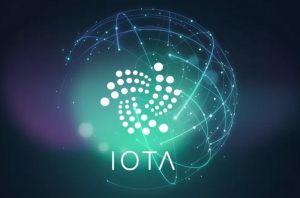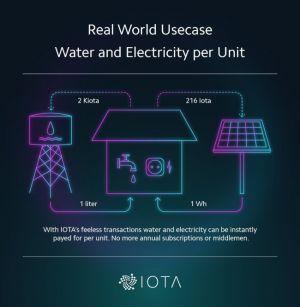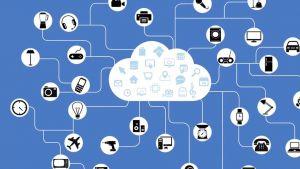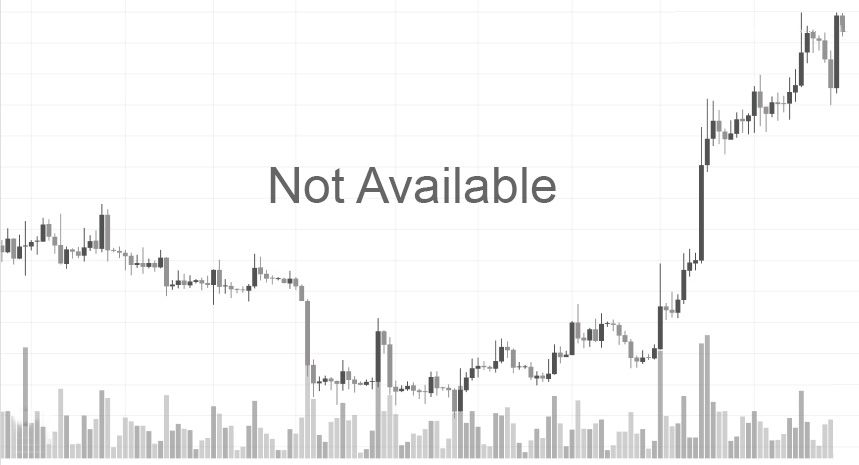MIOTA is the official token of the IOTA platform and namesake cryptocurrency aimed at securing instant processing of machine-to-machine transactions between the Internet of Things (IoT) devices, all with improved scalability and nonexistent fees.

What Is IOTA?
Launched in June 2016, the IOTA platform betrays its main purpose in the name itself, with it being the short form for the “Internet of Things Application”. In short, the Internet of Things (IoT) is the concept involving the extension of internet connectivity to include as many physical devices within a single ecosystem. As such, it is found at the heart of many hi-tech concepts such as smart homes and smart cities which feature connected devices capable of exchanging data with the purpose of achieving operational synergy.
Supported by its MIOTA token, the IOTA platform’s main task is to enable instantaneous and feeless transactions between devices which are parts of the IoT network, no matter how big or small it is. In addition to this, IOTA offers immutable data history tracking and computing resource sharing, with plans to eventually expand its role to become the payment settlement and data integrity layer of smart cities, energy grids, infrastructure, financial industry, etc.
The IOTA platform does not rely on the blockchain technology by virtue of its removal of blocks, central ledger and miners which would be otherwise required to run it. Instead of a blockchain, IOTA relies on its own distributed ledger solution called the Tangle, which is supposed to overcome the shortcomings of blockchain related to rising transaction fees and processing scalability. The platform emerged as the joint work of Sergey Ivancheglo, David Sontesbo, Serguei Popov and Dominik Schiener.
What is IOTA Trying to Achieve?
Despite being largely focused on the Internet of Things, the IOTA developers hope to see their platform aligned with some of the broader goals of the current generation of crypto technologies:
- The Internet of Things is an emerging technology whose pairing with cryptocurrency such as IOTA should offers benefits to the global economy. Making the machine-to-machine (M2M) transactions on the IOTA platform both automatic and more efficient should help with the adoption of the Internet of Things technology which is already a force to be reckoned with on a global scale. With more than 26 billion IoT devices being in use as of 2019, their everyday use becomes more prominent as various sensors and cameras are now being used to keep track of conditions in manufacturing and agricultural facilities, along the transport lines, roads and bridges as well as in stores and homes. IOTA is designed to help these devices share their resources in a more efficient manner, thus optimizing their allocation.
- IOTA’s new transaction model comes with a promise of free and fast transactions with a focus on micropayments, all functioning as the foundation of future “machine-based” economy. The IOTA’s Tangle system theoretically allows for supporting faster and more numerous transactions. Yet, if these would come with the obligatory charging for transaction fees, this could lead to the situation in which the devices in the Internet of Things network would be often required to pay a fee which is higher than the amount of value which is being transferred. To counter this, IOTA takes the fee payments out of the equation altogether. Based on this, IOTA can promise that some micropayments, for example those relating to water and electricity bills can be paid instantly by individual devices, without relying on annual subscription models or middlemen. In this manner, both the individual users and devices would pay only for what they actually consume instead of focusing on when they need these resources.
- With its transaction system, IOTA promises to resolve the issue of scalability and security which are often the scourge of various blockchain-based systems. The computing power of the IOTA network is designed in a manner that it should increase with the larger number of devices that become parts of its ecosystem. All of the devices connected as parts of the IoT network require support for dozens of transactions they make in short intervals, as they are required to purchase stuff such as utilities, bandwidth or storage whenever these resources are required. To support this, IOTA’s transactional chains are interconnected so that the more transactions take place on it the more the network should become equipped to deal with their increasing number. Also, constant internet connectivity is not a requirement to participate in the IOTA network, which should promote savings on costs of electricity or the internet. The enormous amount of mutual verifications taking place on the Tangle is supposed to protect IOTA from double spending and other security issues.

How Does Tangle Work?
Instead of relying on blocks and chains found with the standard blockchain architecture, the IOTA’s unique take on the transaction processing is based on having the transactions streamed and “entangled” as part of its Tangle consensus-creating system. It works in the following manner:
- Instead of a global blockchain, IOTA uses the verification methodology known as Directed Acyclic Graph (DAG) or Tangle. Based on it, M2M transactions on the IOTA platform rely on a novel model of verification in which the submitted transaction depends on the verification of two other earlier transactions.
- Transactions are issued by nodes and stored in the ledger called the tangle graph. The graphs consist of edges which are created by having a new transaction approve two previous transactions.
- For each instance of approval, the verifier needs to connect the transactions in question into the general Tangle mesh. This means that consensus is reached based on a web of verifications. Over time, each transaction will become linked to both the transactions it verifies and the future transactions that will verify it.
- Even if there is no direct edge between two transactions, transaction A can indirectly approve transaction B if there is at least a directed path leading from A to B.
- The genesis transactions are approved directly or indirectly by all other transactions. When a tangle is created, there is an address with reference to the address with relevant tokens which are created as part of the genesis transaction. They are sent to other genesis addresses. Based on this, IOTA wants to get rid of the need to create new tokens in the future, removing the reliance on mining from its mode of operation.
- All that is required for participation in the IOTA network is to have a user perform a symbolic amount of computing aimed at verifying two earlier transactions. Their reward is the future verification of their own transactions as part of an incoming transaction-based validation.
Is the IOTA Project Financially Sustainable?
Considering the unique feeless system of transaction processing (with the only costs being those related to electricity), there is a legitimate question of how to make the IOTA project self-sustainable in the long run.
For starters, the IOTA platform runs on an open-source namesake protocol which is mainly tasked with ensuring transaction processing and data transfers in a secure and highly decentralized manner. Being of an open nature, the IOTA protocol is sometimes described by the developers as an equivalent of the Hyper-Text Transfer Protocol (HTTP) for distributed and collaborative information systems at the heart of the modern internet.
This allowed the IOTA developers to claim that their protocol has no inherent profit model but that it rather functions as a set of rules for sharing common information and transferring value. The development of the protocol has been left in charge of the IOTA Foundation which is tasked with promoting its adoption and handling future development. Being a non-profit enterprise, the IOTA project had to rely on the IOTA community and its token donations. As the MIOTA supply shall remain fixed, the project will continue to be funded by relying on the tokens’ increased value over time, as well as on potential grants and contributions from companies and individuals.

MIOTA Availability and Partnerships
Considering that IOTA is built to service devices of diverse manufacturers by design, it’s no wonder that the project is big on building partnerships. Having received praise from the likes of Deutsche Bank back in 2017, the IOTA team also managed to score a strategic partnership with the Japanese electronics giant Fujitsu back in 2018. The partnership involves the development of IOTA as a data storage medium, with a focus on its immutability, trust and data security across the supply chain.
In 2019, IOTA entered the partnership with yet another global player, Jaguar Land Rover, as part of the joint effort to test a service that will allow drivers to earn tokens and make payments on the move. Drivers will be able to earn credits by enabling their cars to automatically report road condition data, such as traffic congestion or pothole locations, to navigation service providers or local traffic authorities. As a reward, drivers will be able to use earned tokens to pay for coffee, tolls, parking fees or charging of electric vehicles.
As of May 2019, the token’s market cap stood at USD 823 million, down from its historic peak value of USD 14 billion which was reached in early 2018. Total supply of the tokens is capped at 2.5 billion units.
Acquired MIOTA tokens can be stored in the IOTA wallet which is recommended by the developers themselves, while the Trinity wallet remains another popular option.
